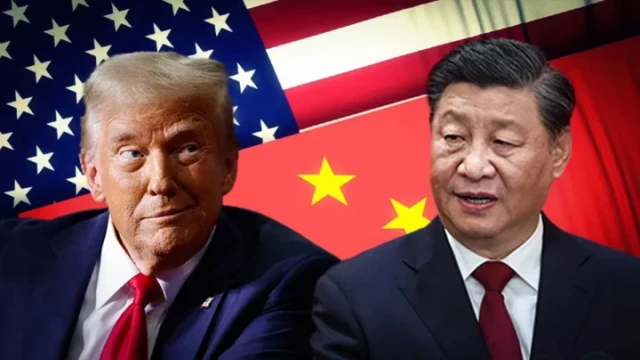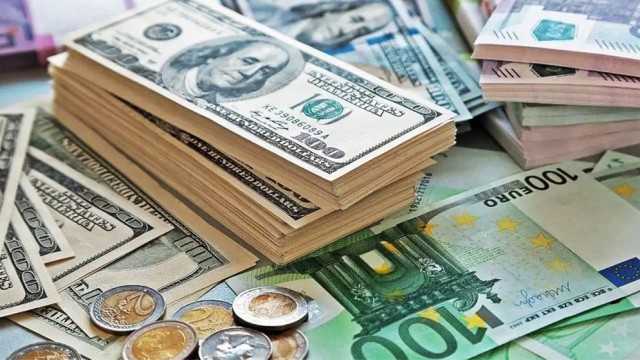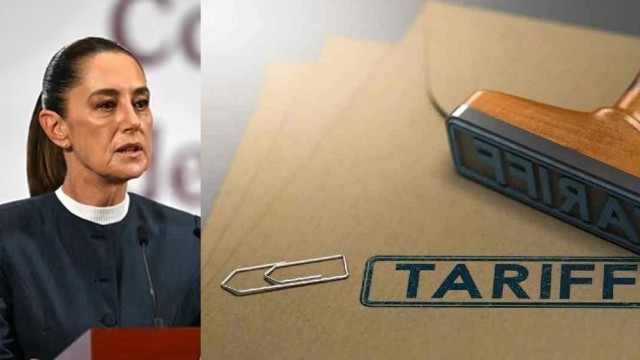Washington/Beijing, Apr 11 (V7N) – The ongoing tariff conflict between the United States and China, two of the world’s largest economies, has entered a dangerous new phase. On April 9, US President Donald Trump imposed more than 100 percent tariffs on all Chinese imports. In retaliation, China’s Ministry of Finance responded with an 84 percent tariff on all American goods.
This tit-for-tat escalation marks the latest chapter in a trade war that could have far-reaching global consequences, affecting markets, consumers, and economies worldwide
In 2024, the two countries traded goods worth $585 billion. However, there is a massive imbalance—the US imported $440 billion from China, while China imported just $145 billion worth of American goods, leaving a US trade deficit of $295 billion.
Despite President Trump claiming that the deficit stands at $1 trillion, the actual figures indicate a significantly lower gap, equal to about 1% of the US economy. Nonetheless, Trump has long cited the deficit as justification for punitive tariffs
While tariffs have somewhat reduced US dependence on China, Chinese exporters have routed goods through Southeast Asia—notably solar panels sent via Vietnam, Malaysia, and Cambodia—to bypass US duties. The US Department of Commerce confirmed this rerouting in 2023.
In response, the US is now extending tariffs to those intermediary countries, which may drive up costs for American consumers as the price of electronics, solar products, and smartphones rises
-
US exports to China: Soybeans (for feeding 440 million pigs), medicines, petroleum.
-
China’s exports to the US: Smartphones (9% of US imports), electronics, computers, toys, EV batteries.
With tariffs driving up costs, US consumers face higher prices on essential goods like electronics and smartphones. Apple, which manufactures heavily in China, has already seen a 20% drop in its stock value this month.
Chinese consumers, too, will feel the heat from rising prices on imported US goods due to Beijing’s counter-tariffs
Both countries are expected to employ non-tariff strategies to gain leverage:
-
China may restrict exports of key industrial metals such as lithium, copper, germanium, and gallium, which are essential for US military technology.
-
The US, on the other hand, may escalate technological sanctions, making it harder for China to access advanced microchips vital for AI development.
There are also discussions within the Trump administration about pressuring countries like Cambodia, Vietnam, and Mexico to sever trade ties with China or risk losing access to the US market.
According to the International Monetary Fund (IMF), the US and China together account for 43% of the global economy. If this trade war pushes either nation into recession or stagnation, it could ripple across the world:
-
Slower global growth
-
Disruptions to investment
-
Export dumping by China in third-party markets
With China’s $1 trillion trade surplus, it may resort to exporting excess goods—like cheap steel—to countries such as the UK. This might benefit consumers with lower prices, but local industries and jobs could be at risk.
Groups like UK Steel have already warned of an influx of dumped Chinese steel products, threatening their survival
Most economists agree that this escalating trade conflict poses a serious threat to the global economy. The mounting tariffs, coupled with strategic restrictions on technology and resources, are undermining global trade stability.
Unless both nations return to the negotiating table, the economic fallout may extend far beyond their borders, affecting industries and consumers worldwide.
Source: BBC
END/MSS/AJ































Comment: